Media | Articles
Ford’s 2002–05 Thunderbird could finally fly as a future classic
Remember the good old days of the late 1990s? That’s the decade that reintroduced cars from the even better old days! Be the VW New Beetle (1998) or cars with throwback influences (Plymouth Prowler, PT Cruiser, Audi TT, and Chevrolet SSR, to name a few in a long list), automakers quickly figured out that going retro meant raking in the cash. The market was primed for Ford to do the same, and that’s what it did … eventually. In the case of the Thunderbird, half-heartedly.
The new, retro-styled T-bird was introduced at the 1999 North American International Auto Show in Detroit. Its retrofuturist design pulled at all the right heartstrings and utilized Ford’s upscale DEW98 chassis, which also underpinned a pair of aspirational upstarts, the Lincoln LS and the Jaguar S-Type. The detuned Jaguar V-8 ensured the T-bird would rumble, and an impressive palette of eggshell-inspired colors completed the ’50s look. The stage was set for a rapid progression from concept to production.
But this period in Ford’s history was marred by a transition away from its core competencies. As CEO Jac Nasser suggested, “Ford can’t build the company if it holds on to a mind-set that doesn’t respond swiftly to consumers’ needs.”
Rushing the 1999 Thunderbird to production wasn’t one of those consumer needs: The final product arrived roughly two years after the concept, for the 2002 model year. Despite not striking when the iron was hot, the first year of production still netted 31,368 customers—solid numbers for a niche-interest vehicle. That number halved in 2003, a disappointing figure considering the extra 28 horsepower and fatter torque curve offered by that year’s revised V-8 engine. Sales continued to drop until the final year in 2005, but the story doesn’t end there.
While the Thunderbird was initially a flash in the pan, it was not a failure, as many across the internet suggest. The car, built on the prevailing popular design of the moment and one of the strongest American nameplates around, was unequivocally not the problem. There was a market for a retro Thunderbird roadster, one whose loyalty was on par with that of the low-volume Chevrolet Corvette. But no car is made in a vacuum, and corporate interests of a struggling company swirled above the T-Bird like hurricane-force headwinds.
The platform beneath the retro sheetmetal and the factory that created the Thunderbird were each ultimately deemed more of a liability than an asset at Ford. To a company in transition, the T-Bird and its Lincoln LS sistership would never sell in numbers that justified their unique parts and their space at a factory of questionable utility. But that didn’t stop forces from trying to alter the fate of the DEW98 platform—there could have been a happier ending.
The history of the Thunderbird has been intertwined with that of Lincoln since the 1960s, so the notion of 2000s Lincoln making its own version of this Thunderbird was not without merit. Called the Mark X, Lincoln’s concept sported unique sheetmetal and a different dashboard in place of the one shared by the Thunderbird and the LS. The same applied to the stunning Ford Forty-Nine, which used the same DEW98 underpinnings but clothed them in one of the most dramatic examples of Ford’s retrofuturist aspirations. It’s a shame that FoMoCo rejected both concepts, but the decision comes as no surprise: The factory in Wixom, Michigan, was on the chopping block (RIP, as of 2007), and Ford realized platform interchangeability with Jaguar, a profit-sucking brand it no longer wished to own, was not a good long-term move.
With the retirement of Jacques Nasser and the ascension of Bill Ford, perhaps the Thunderbird could have transferred over to the Mustang’s platform and factory, as that model shared parts with Ford products at lower price points. (Hindsight, especially looking back at the success of the Fox-body chassis that the two models shared from the late ’70s into the ’90s, suggests such a move should have always been the case.) But Ford’s new direction, The Way Forward, had no room for expensive tomfoolery: The company was hemorrhaging cash, putting up the crown jewels as collateral on $23.6 billion in loans, and fighting for its survival a mere three years before its GM and Chrysler counterparts declared bankruptcy.
Such a strained situation is absolutely, unequivocally not the time to build a brand around a luxury sports roadster, no matter its name and legacy. With added context, the notion that the 2002–05 Thunderbird was a failure falls away, revealing a tragic tale with multiple villains. More to the point, the machine itself was a solid effort with a loyal following, and though buyer demographics might look like you’d expect at a glance, there’s more to these numbers than what’s on the surface.
It shouldn’t come as a surprise that the eleventh-generation Thunderbird’s vintage style appeals to boomers more than anyone else (65 percent), but their share of T-bird quotes is also rising. Also heading upward is interest among millennials, which has nearly tripled since the beginning of 2020. Their share is a modest 3 percent, but the growth rate is significant. Though the pre-boomer market share as a whole is decreasing, ’02–05 Thunderbirds are a popular choice among this segment and outstrip buyers of the original 1955–57 Thunderbird (18 percent vs. 16). Special editions of this Thunderbird get the most attention across all demographics.
Speaking of special iterations, in 2002, Ford made 200 units of black and silver Neiman Marcus edition. The next year brought the James Bond–themed, orange and coral 007 Edition (700 units made), and a Pacific Coast Roadster edition in debuted in 2004 (1000 units). The final year of production coincided with the Thunderbird’s 50th Anniversary, so a unique Cashmere Edition (1500 units) was introduced. Unlike previous celebrations, the Cashmere Thunderbird shared its anniversary fender emblems with all 2005 models, leading many to believe all models of that vintage are commemorative editions. That confusion might undermine the market for the Thunderbird’s legitimate special editions, but their impressive design and unique trimmings are indeed attracting buyers, and the Anniversary cars are trending up in value.
Much like the 1977–79 Continental Mark V decades before, Thunderbird special editions command a modest premium over a regular Thunderbird (which was available either in a Deluxe or a more upscale Premium trim). The Neiman Marcus edition commanded a significant price premium in late 2022, and though it has gone through a slight pandemic bubble, limited supply should keep it at the top of the T-Bird market, in similar fashion to the Diamond Jubilee versions of the aforementioned Mark Series.
For all derivations of the eleventh-generation Thunderbird, Hagerty Price Guide values hit their lowest point in mid-2020, and aside from the Neiman Marcus cars, prices have rebounded since settling in 2022. Coupled with the slightly growing younger demographics (and the die-hard older fanbase), the slight upward trend in this cooler market is a healthy sign and a positive indicator for the future.
As it ages, the Thunderbird is transitioning from a vehicle for a certain generation to an icon for all ages. It is only a matter of time before younger folks embrace the eleventh-generation Thunderbird for its retro vibes coupled with the added benefits of modern performance, safety, and efficiency.
Ford once said this last Thunderbird “epitomizes the American Spirit” and “recalls a simpler, more down-to-earth era.” In that regard, Ford nailed the brief. But underneath the veneer of good times and great memories lay a company struggling to find itself, years before a global financial crisis forever altered the automotive industry. That symbolism of optimistic determination could very well be the best thing about the 2002–05 Ford Thunderbird.

***
Marketplace
Buy and sell classics with confidence
Check out the Hagerty Media homepage so you don’t miss a single story, or better yet, bookmark it. To get our best stories delivered right to your inbox, subscribe to our newsletters.
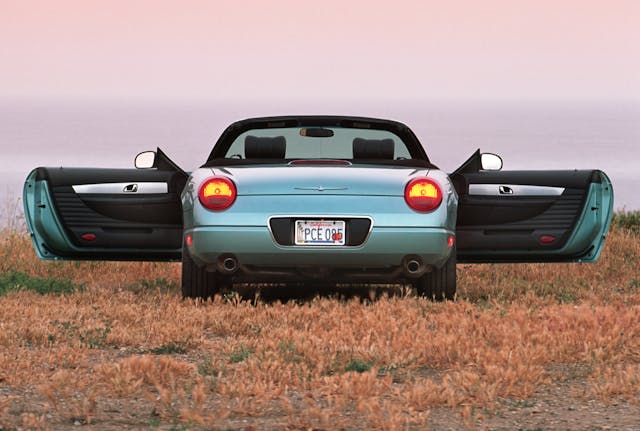
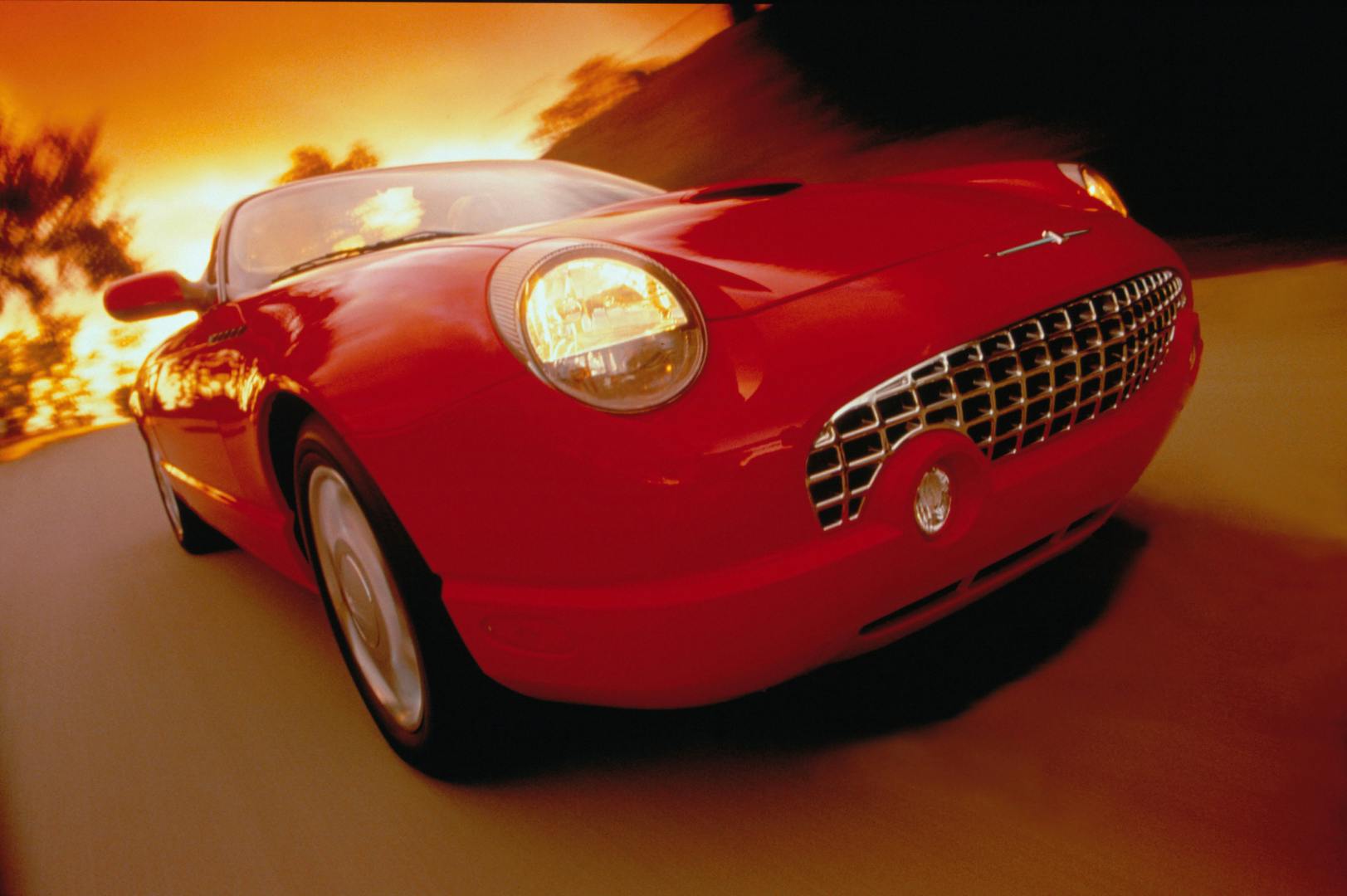
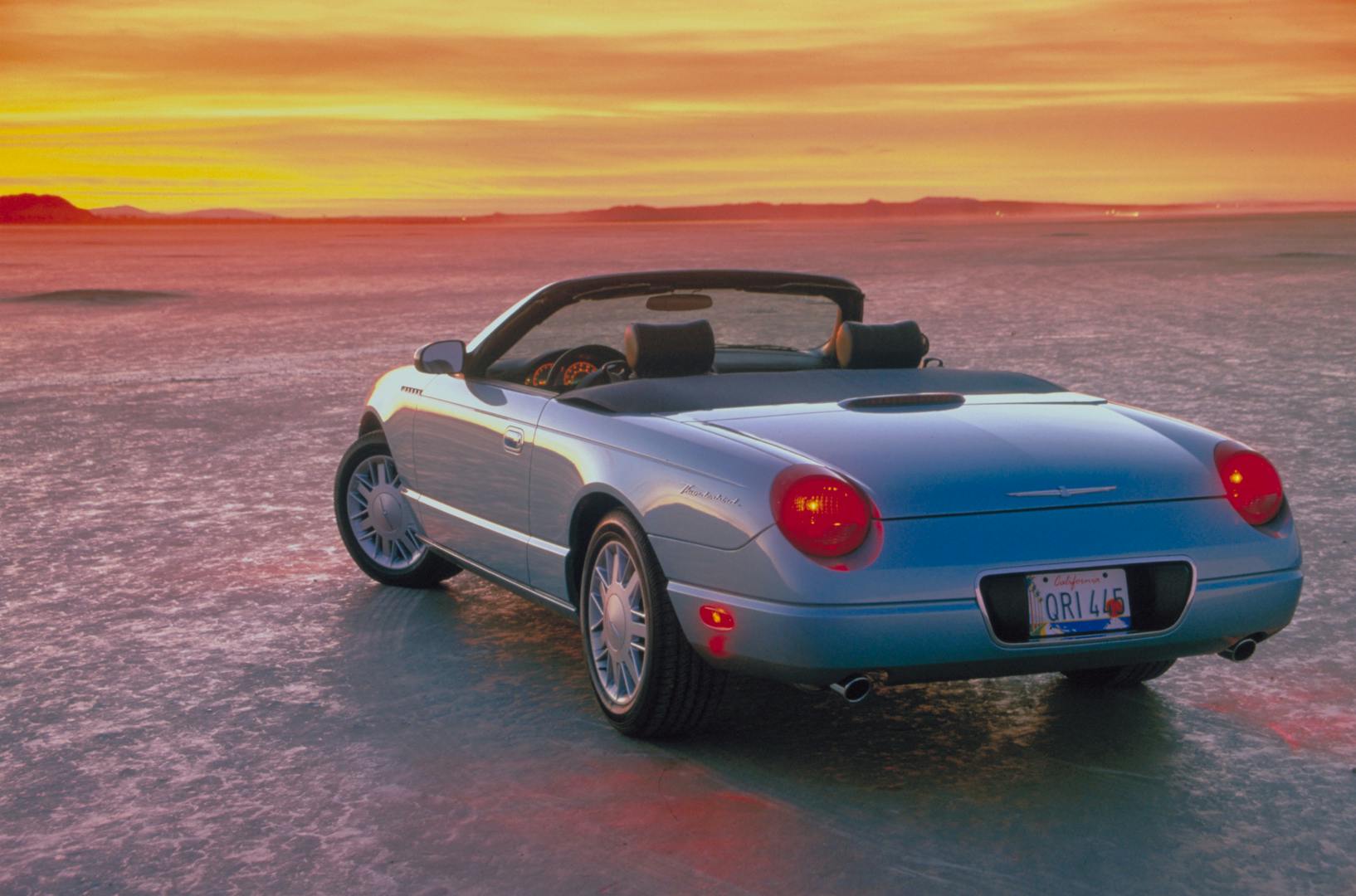
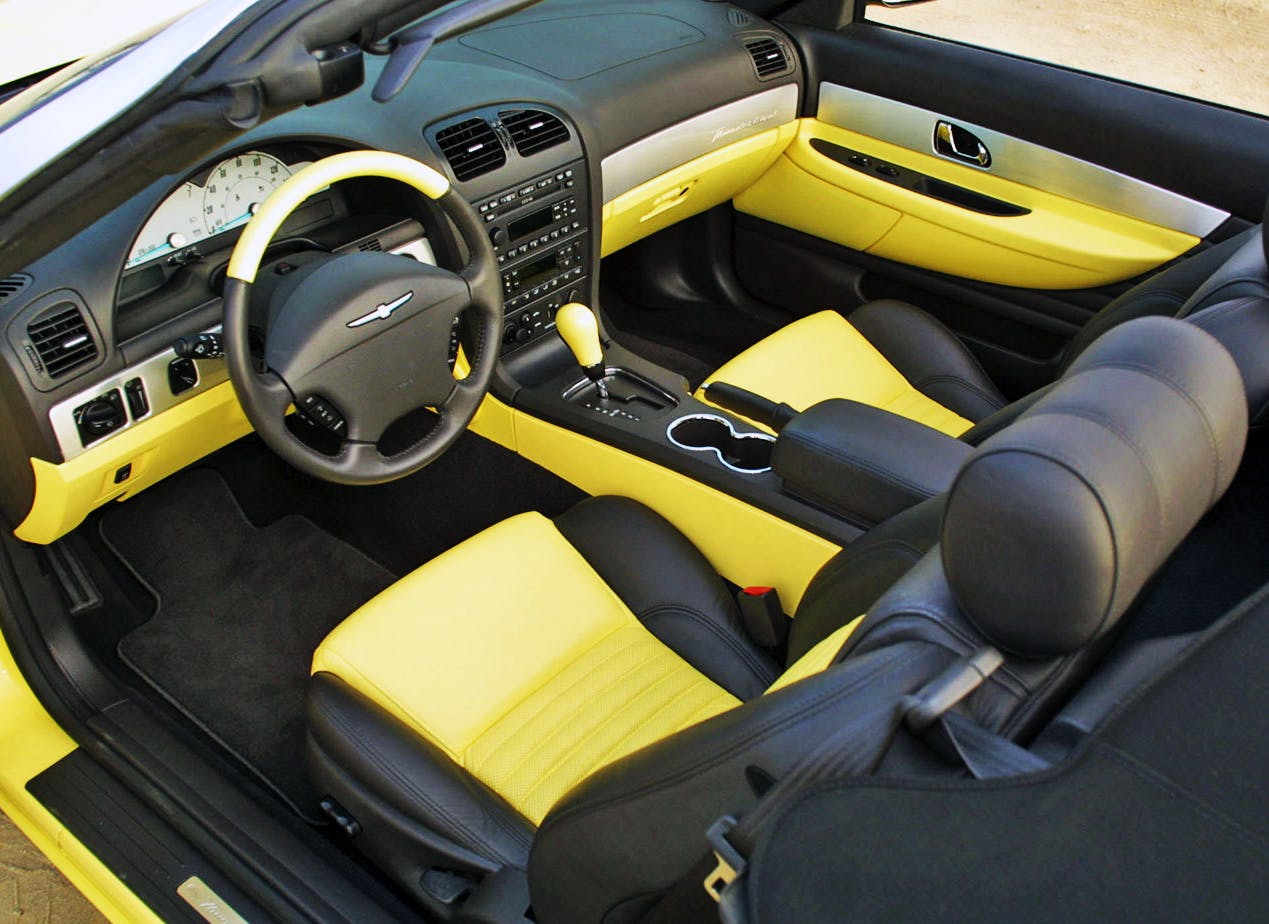


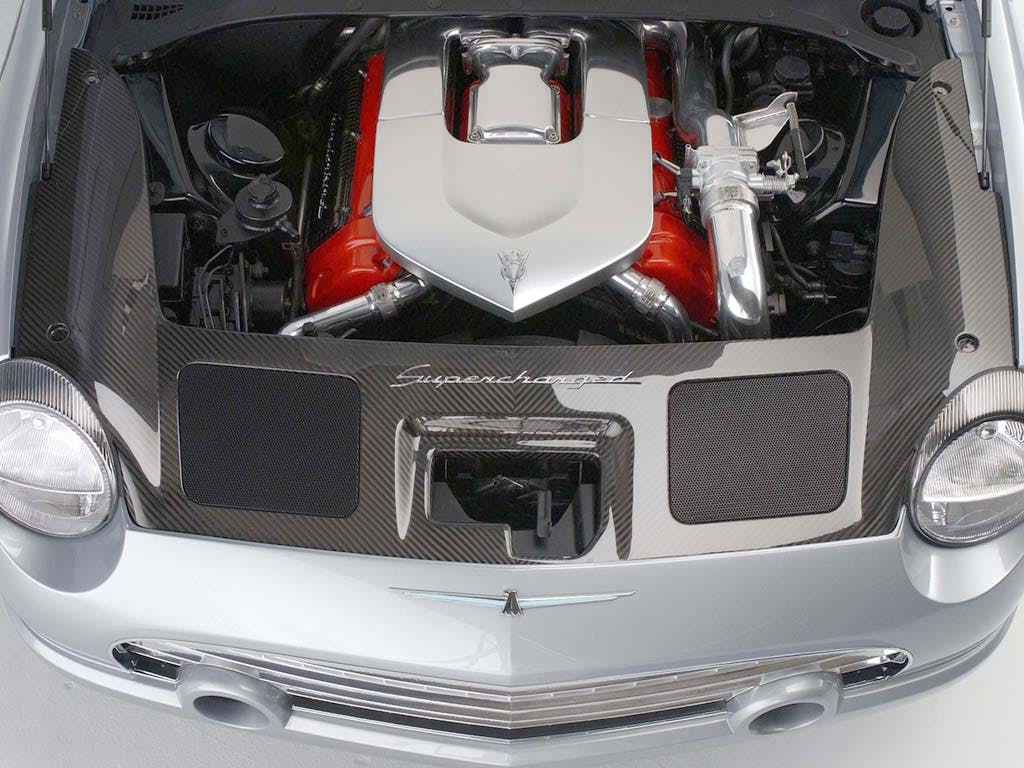

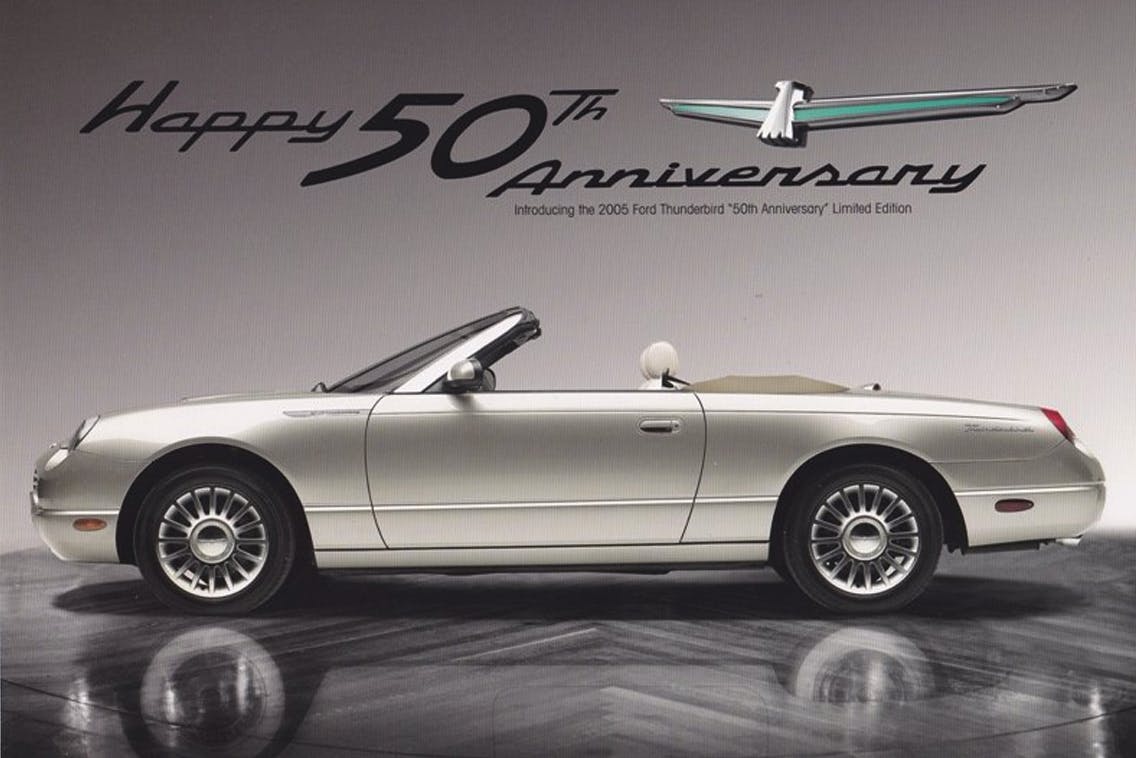
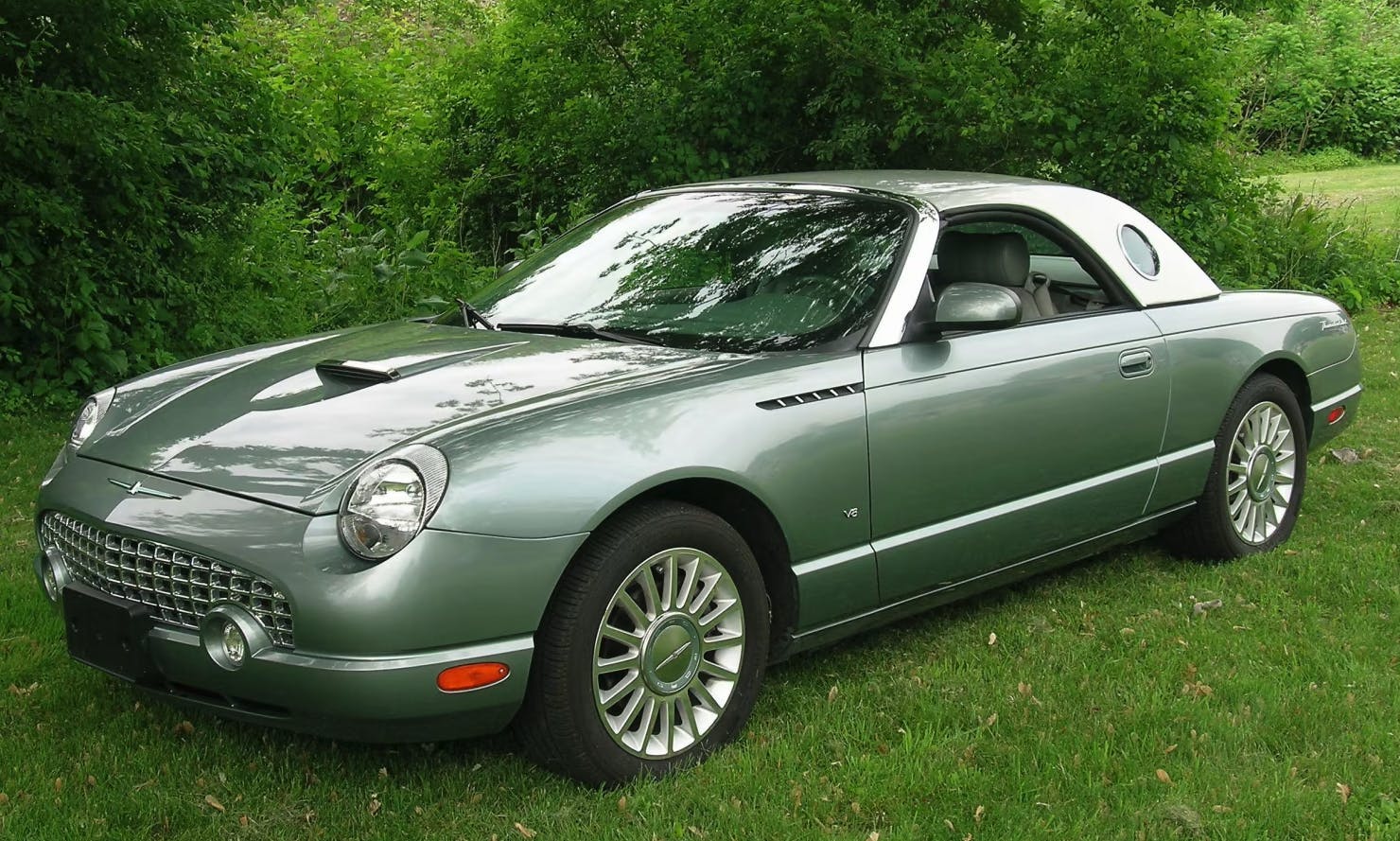
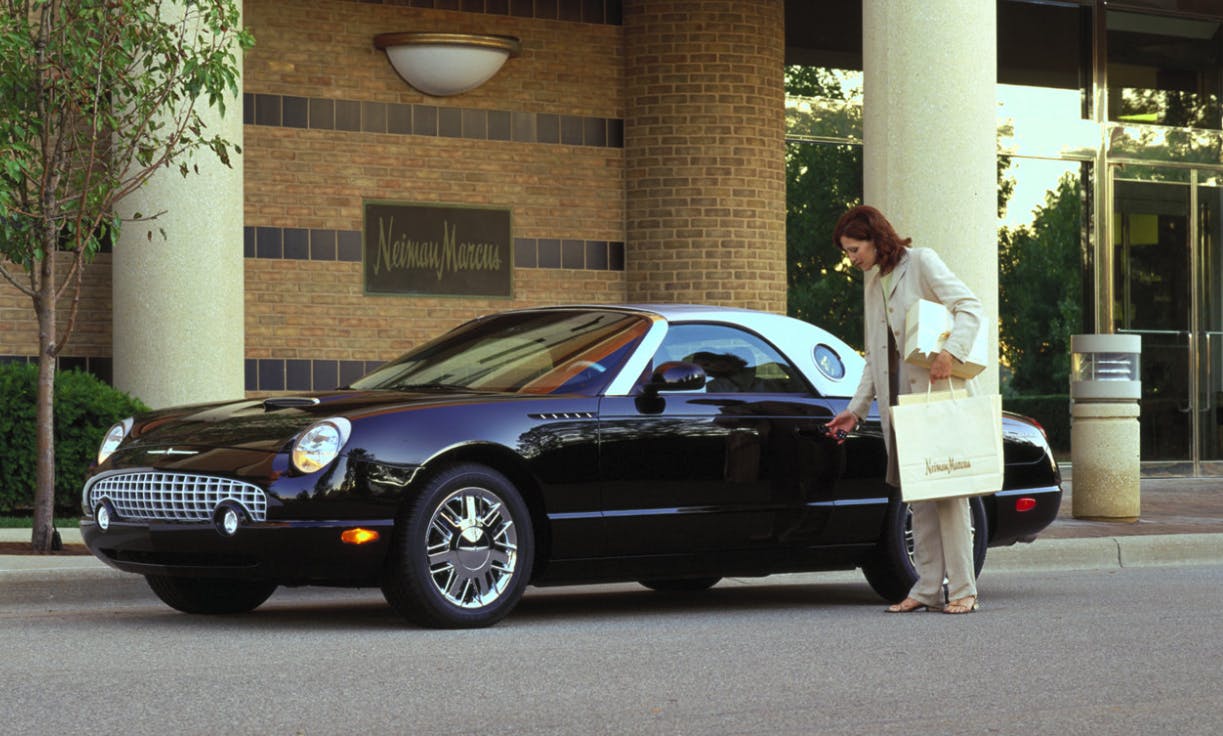
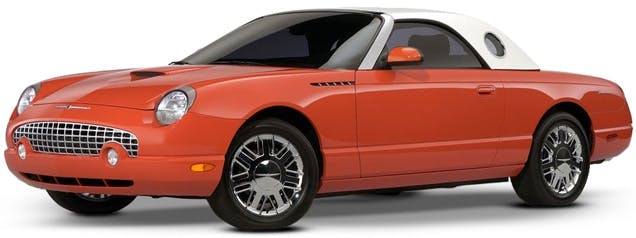






















This T-bird was poorly designed, the as-described jelly bean profile sloping toward the rear denotes a lack of purpose, and a fwd attitude. And the sheet metal grill?? It did not reflect the early T-birds attractiveness, it offered two seats as it’s only claim to be sporting. This car is only appealing to Ford diehards who can’t separate “loyalty” from lousy design. Classic? Hardly.
I remember looking at these when they were new and I almost bought one, but the headroom was terrible, and my head was right into the roof.
The same thing killed this car as killed the ’04-’06 GTO. Greed. This car was overpriced by at least 10 grand.
I always liked the styling of this car, unlike many commentors hereon: clean, trim, and sleek. Unlike some, I like the aero look in general (the 1997-2004 F-150 is my favourite generation of the F-series, for example).
The little T-Bird could have used more power, but being a Corvette competitor was never its purpose. Especially as a two-seater convertible, it has some chance of being collectible in the future. Of course, collectible does not always mean valuable. For example, the Dodge Rampage and Plymouth Scamp of the early 1980’s are somewhat collectible (and very rare), but are not particularly valuable.
If I was in the market for a nice 2-seater convertible, this T-Bird one would be high on my list.
when does age make a car a classic ? you call everything a classic when it is not . go to the ccca web site and see what is a real classic . no mustangs , no camaros . you people need to get real and honest
Why does the “ccca web site” get to define a classic? Maybe you need to get real and honest about being more open minded about the passing of time and how language and the general use of words is flexible and morphs over time.
We bought a red 2002 Bird with the white “portholed” hardtop back when it was new. We have other nice cars, but the Thunderbird is the only only one that still consistently draws compliments from complete strangers whenever we drive it. People ask if they can snap a photograph with it all the time.
These are my mom’s words. She had two of them at once (I think both 2003 but I never paid attention because A it was a ford and B I couldn’t sit in it with the top up at 6’3”) because even though my dad is dyed in the wool GM he’s a good husband:
Not a word about performance, lack of support, and unavailability of parts, using jaguar engines that had high failure rates, etc. even we baby boomers who love the car have had to give them up. The year after we had our white car disaster when the Jaguar engine failed, and then the rebuilt one failed too again for whoever was going to buy the one from the dealer, when we were in Florida, there was a total dearth of Teebird‘s driving around. Prior to our bad experience, the roads were filled with tbirds. I used to count them and name the colors when I came home to your father, when I would just go to almost any shopping center in the Naples area. All the sudden after a white one died many others must’ve died as well because they were hardly to be seen in Naples. Interesting article thank you.
The Ford Fourty Nine or Lincoln Concepts were better looking. A good car idea executed poorly.
Oooff. Sheer disappointment that started before the car even officially went on sale. Meh design, parts bin under the skin, blasé drive, rides too high on its wheels like it has flood pants. The high point of all Ford’s many low points of that era. One of only a few cars that makes me smh each time I see one – being driven by original owner usually because they can’t sell it. Sad, sad chapter.
This last edition of the T-Bird is actually not that bad considering the price point for a luxury 2-door convertible. Will it eventually go up in value? I unfortunately can’t read the future. With low miles a well preserved T-Bird will probably not drop in value of today’s offerings. However I don’t think it will ever be considered a serious collector car by those who seriously collect expensive classics. So if Ford really wants to rebadge the next T-Bird it will be most likely an electric car. However what the did with the electric Mustang is horrid and that car should never be called a Mustang. Even a mid-70’s Mustang II has more Mustang roots than this awful looking electric Mustang. As always leave it to Ford to take the classic out of once were classic cars. We all know that the only true Mustang classics were built in the tri-fives (55-56-57). Every one is still waiting for the Big 3 to come-up attractive fun electric cars. Maybe they might. But I think it may be an impossible task here in the good’ol USA,
I sat in one at a showroom when they were new. Not enough headroom and the price was $75,000. You could buy the originals for much less. So no way I could buy one. I saw one today. They still make me smile and I do consider them a classic.
The new T- Birds were an utter disappointment for me when they came out and in my IMHO the ugliest T-Bird ever made, my opinion hasn’t changed either.
Especially after having a 57 myself at one time. What a styling let down,,,,,
I find it interesting that a lot of the negative feedback on this car is subjective. In reality these cars were good albeit overpriced for their day. The DEW98 platform was really good. I recall the reviewers of the day loving on the handling and balance of the LS Lincoln. Same could be said of the Jaguar S-Type. Also, the Jaguar V8 was really good. The big miss was not applying the fully revised engine for 2003. The Fords got a slight bump in power with no displacement change, but Jaguar bumped theirs up to 4.2L and an even 300hp (400 when supercharged). The other big miss is Jaguar moved to a ZF 6 speed transmission and Ford stuck with the 5 speed. I personally had a 2005 Jaguar S-Type, bought as a certified used car from Jaguar. That car was great and trouble free. Road like a cloud yet when pushed could really handle. Same was said of the LS. I moved from the Jaguar to a Chrysler 300C (another severely under appreciated car).
An absolutely pedestrian, ho-hum design: b-o-r-i-n-g! This design is the automotive equivalent of the old saying: “a camel is a horse designed by committee”. The committee that approved this uninspired design should work in some other industry.
I have a 2002 Black on black. It is amazing the number of positive comments I receive when simply cruising. My sons and grandsons love the car as well and our grandsons in college love to impress the coeds. It has a snappy engine, and the ride is extremely comfortable.